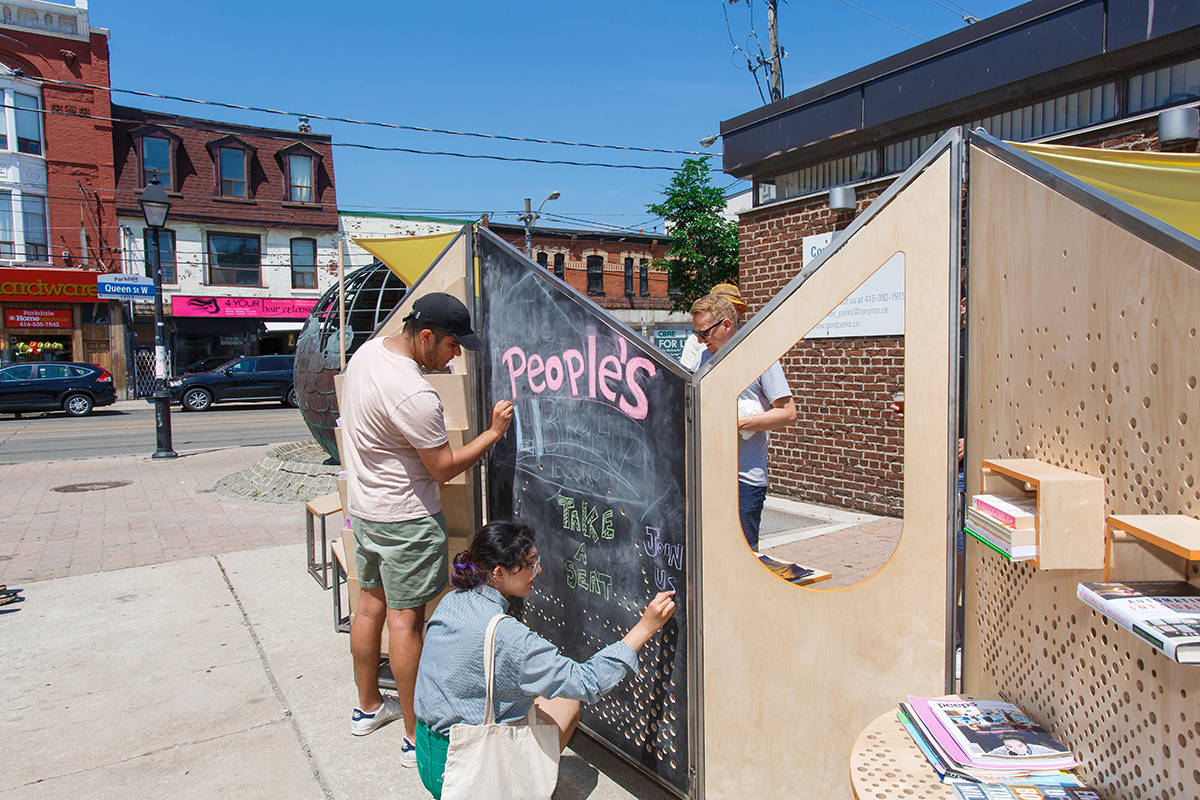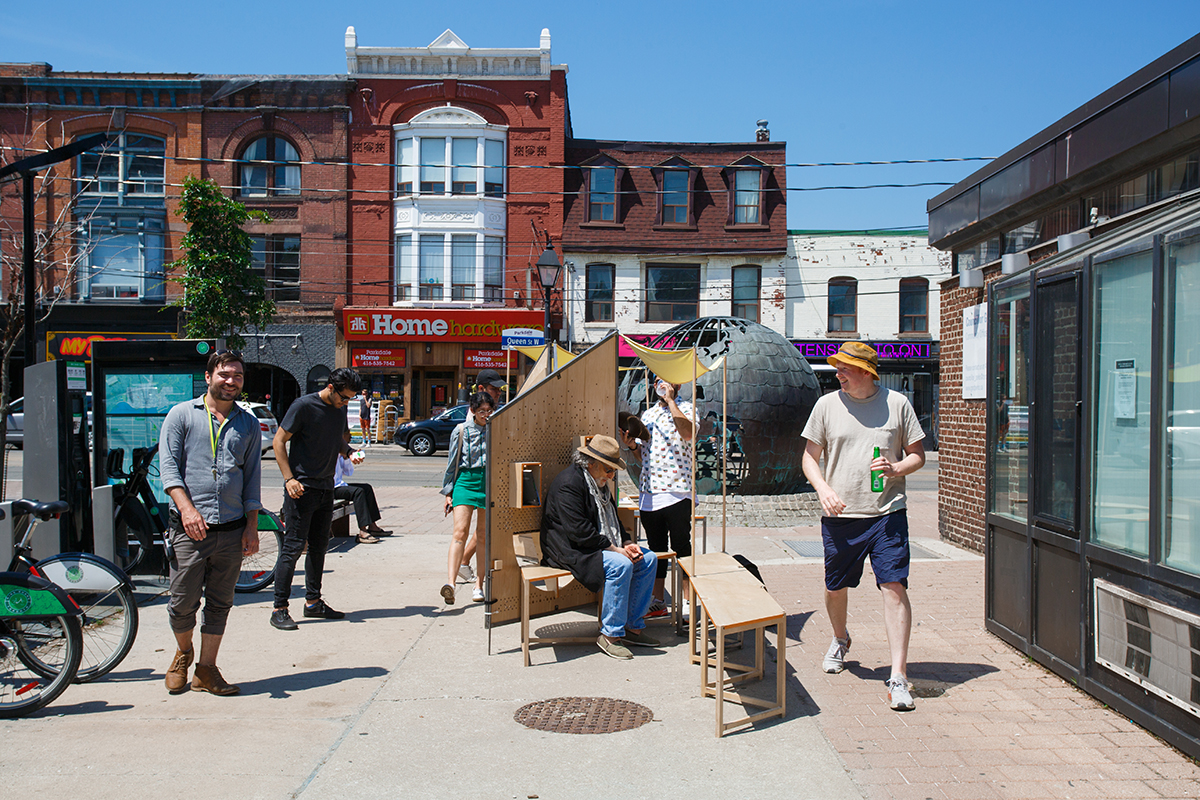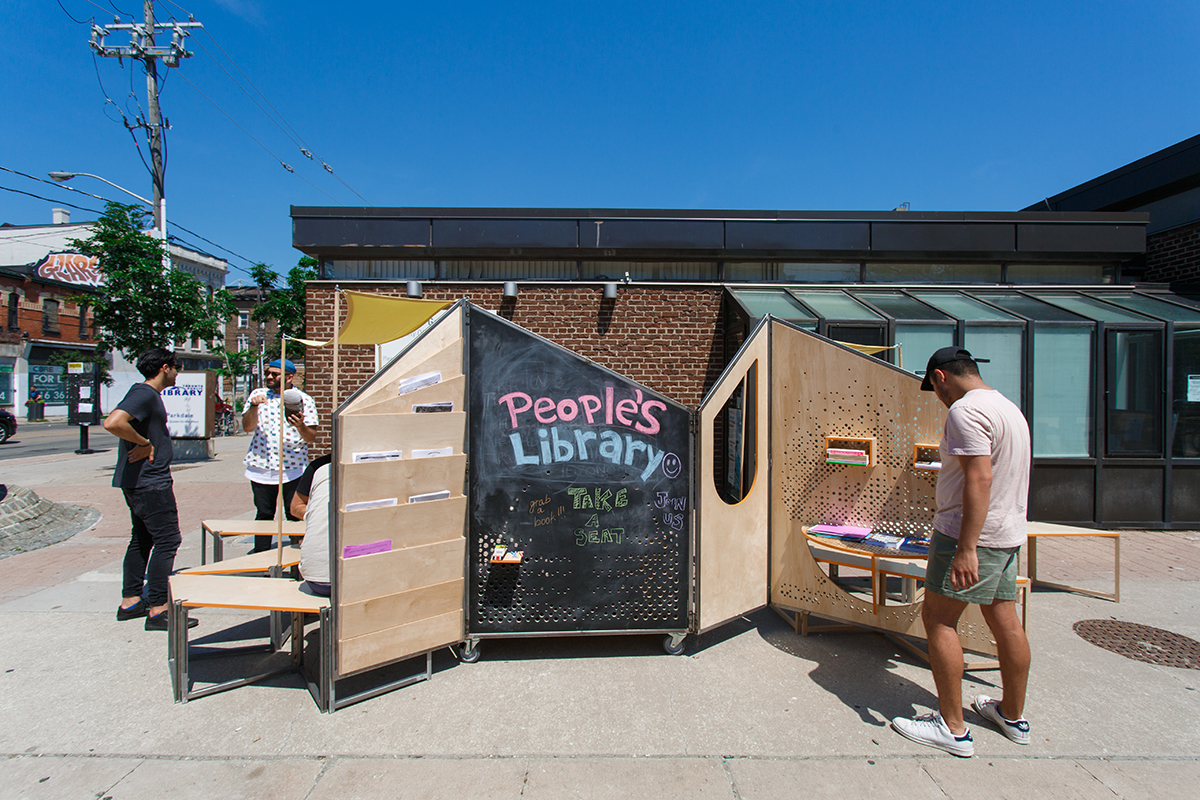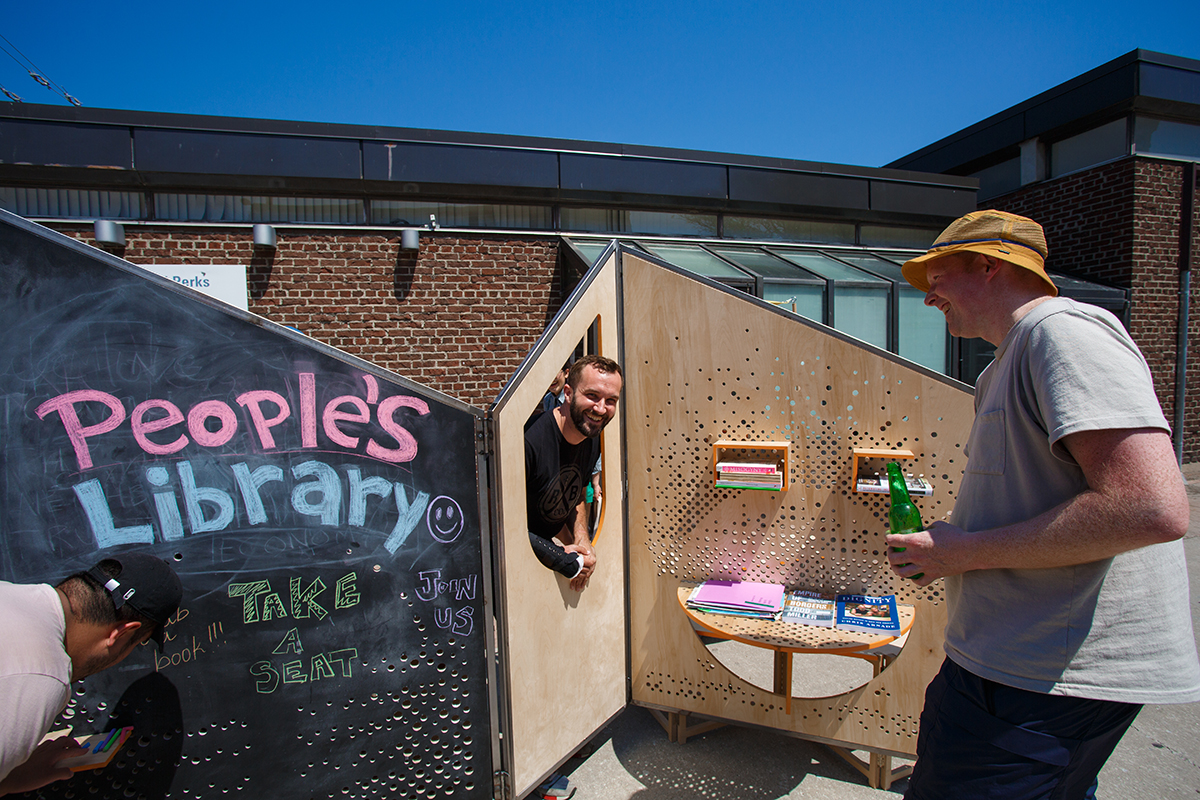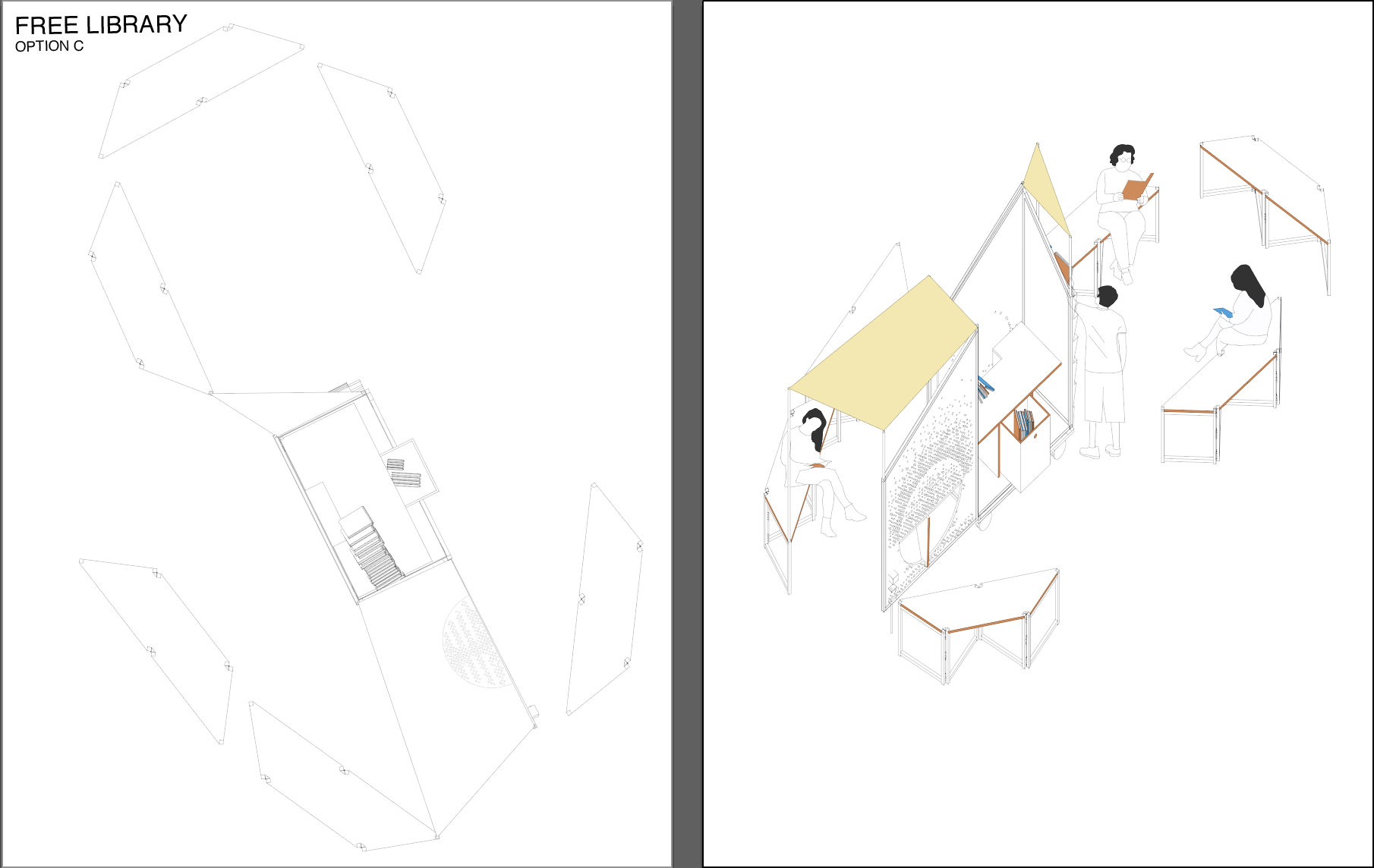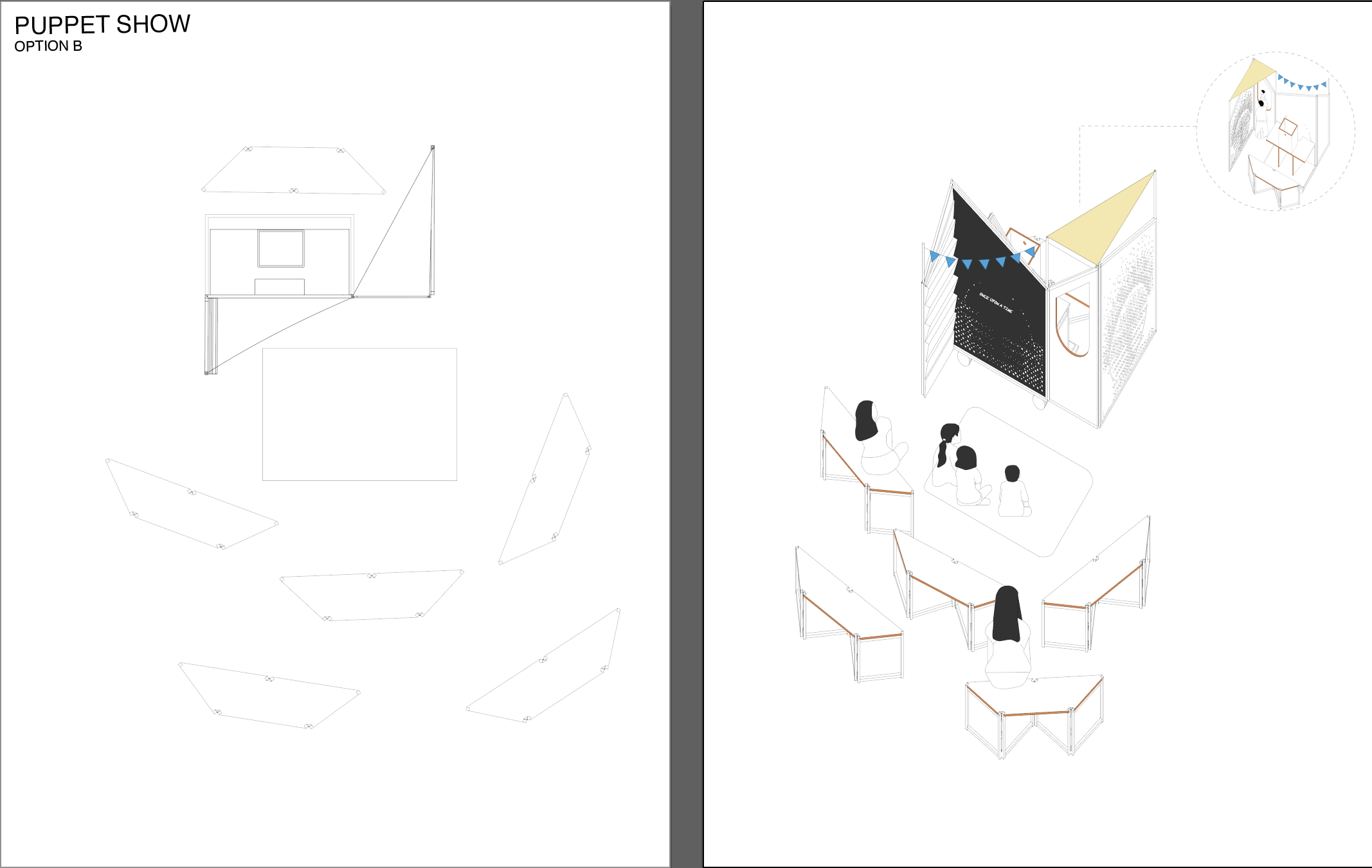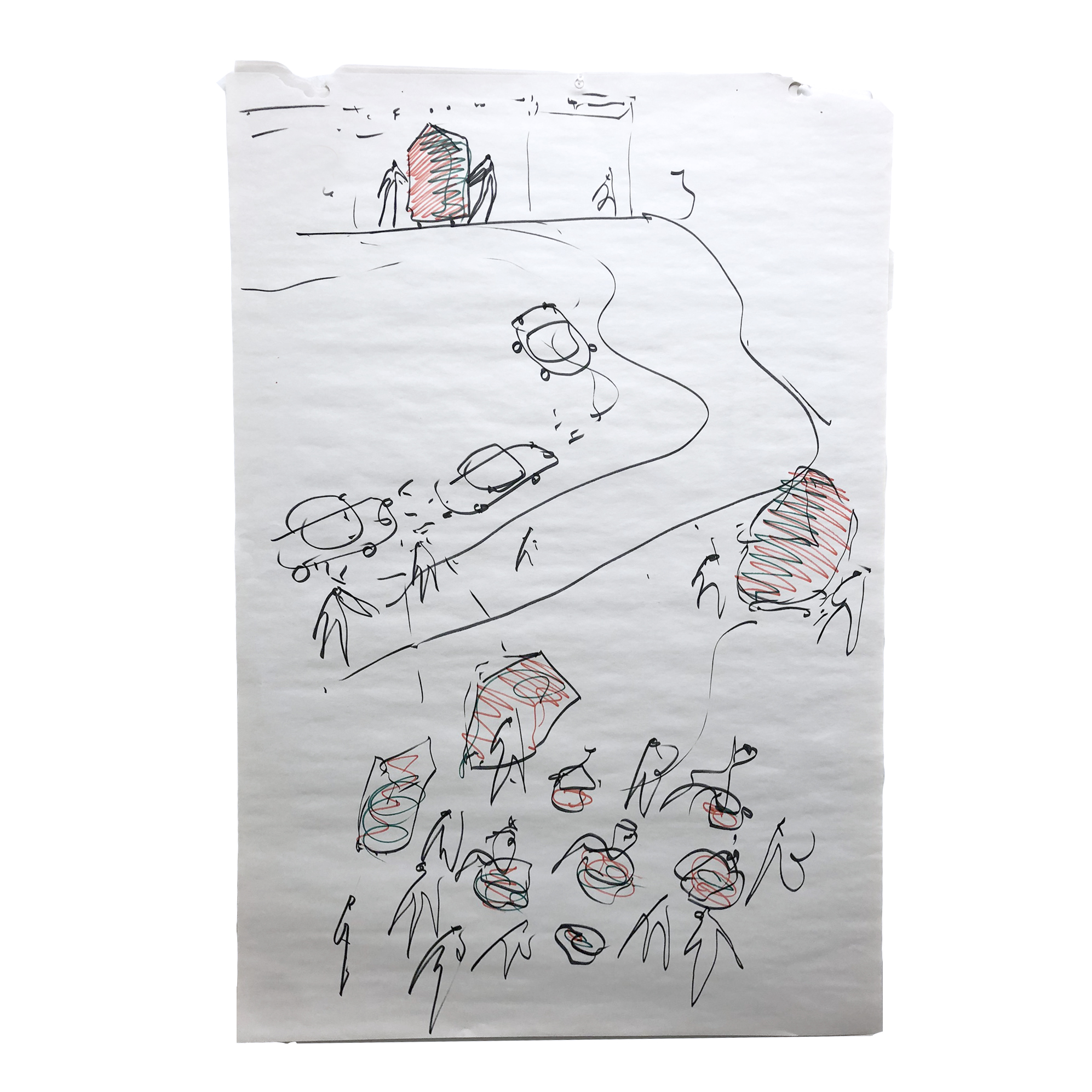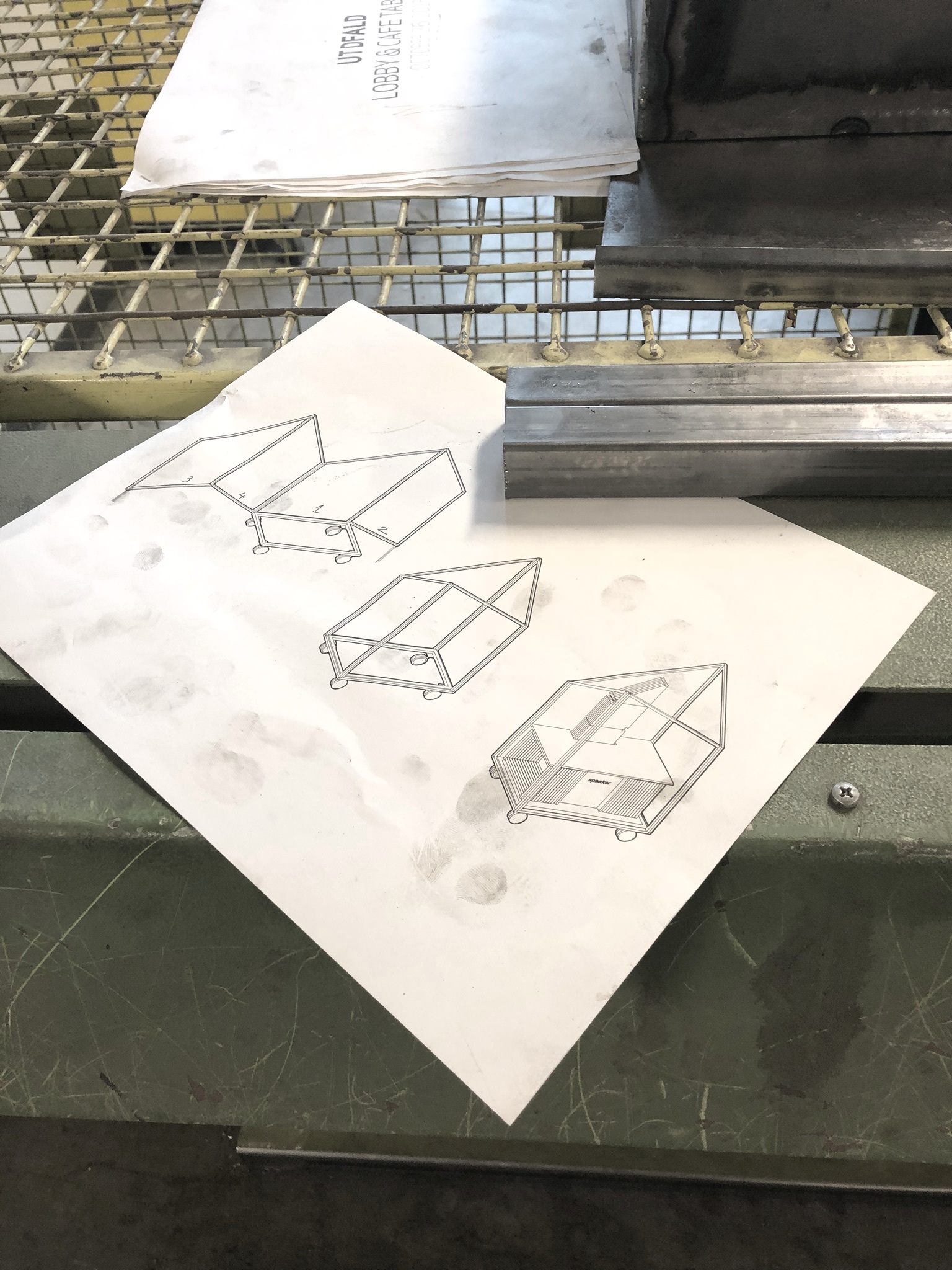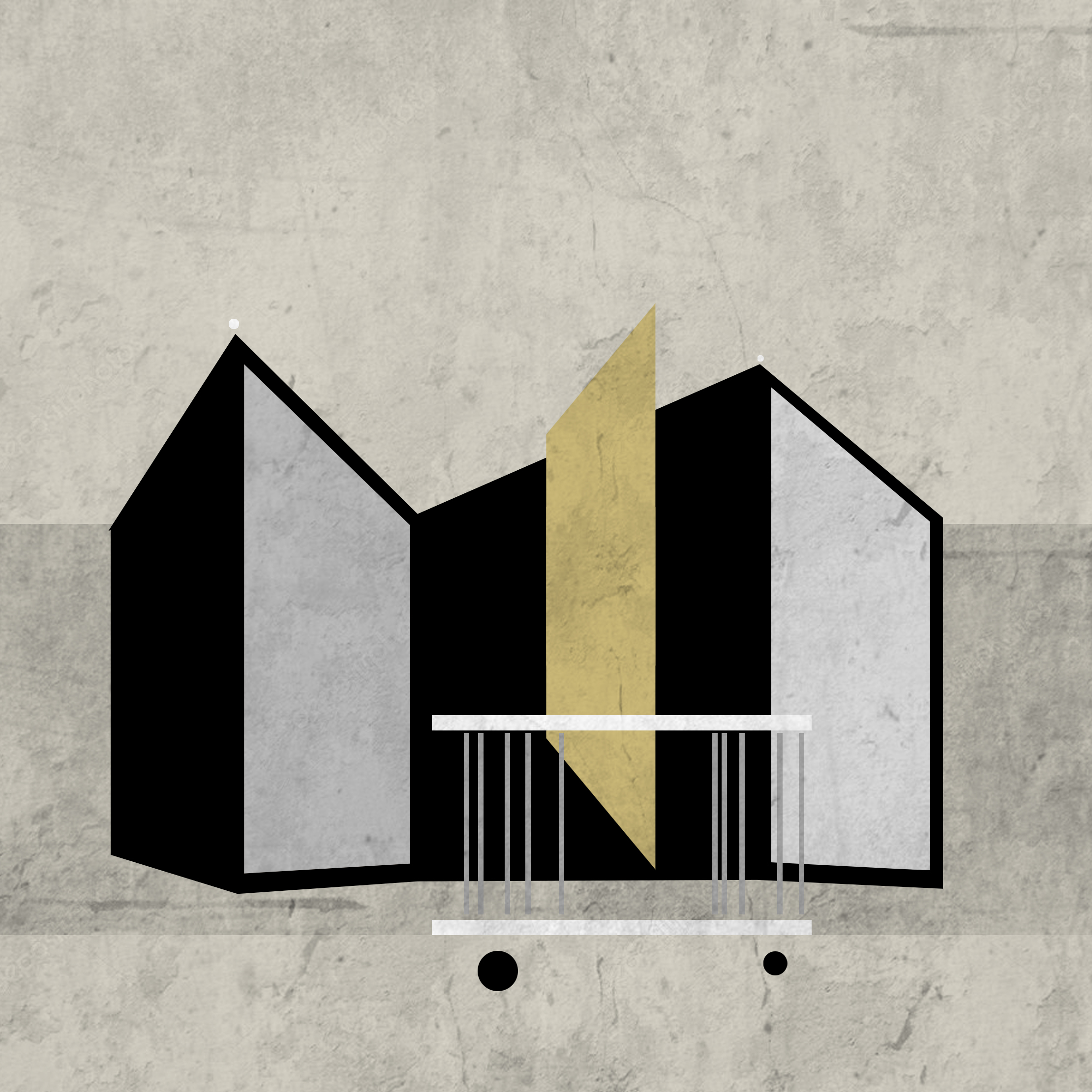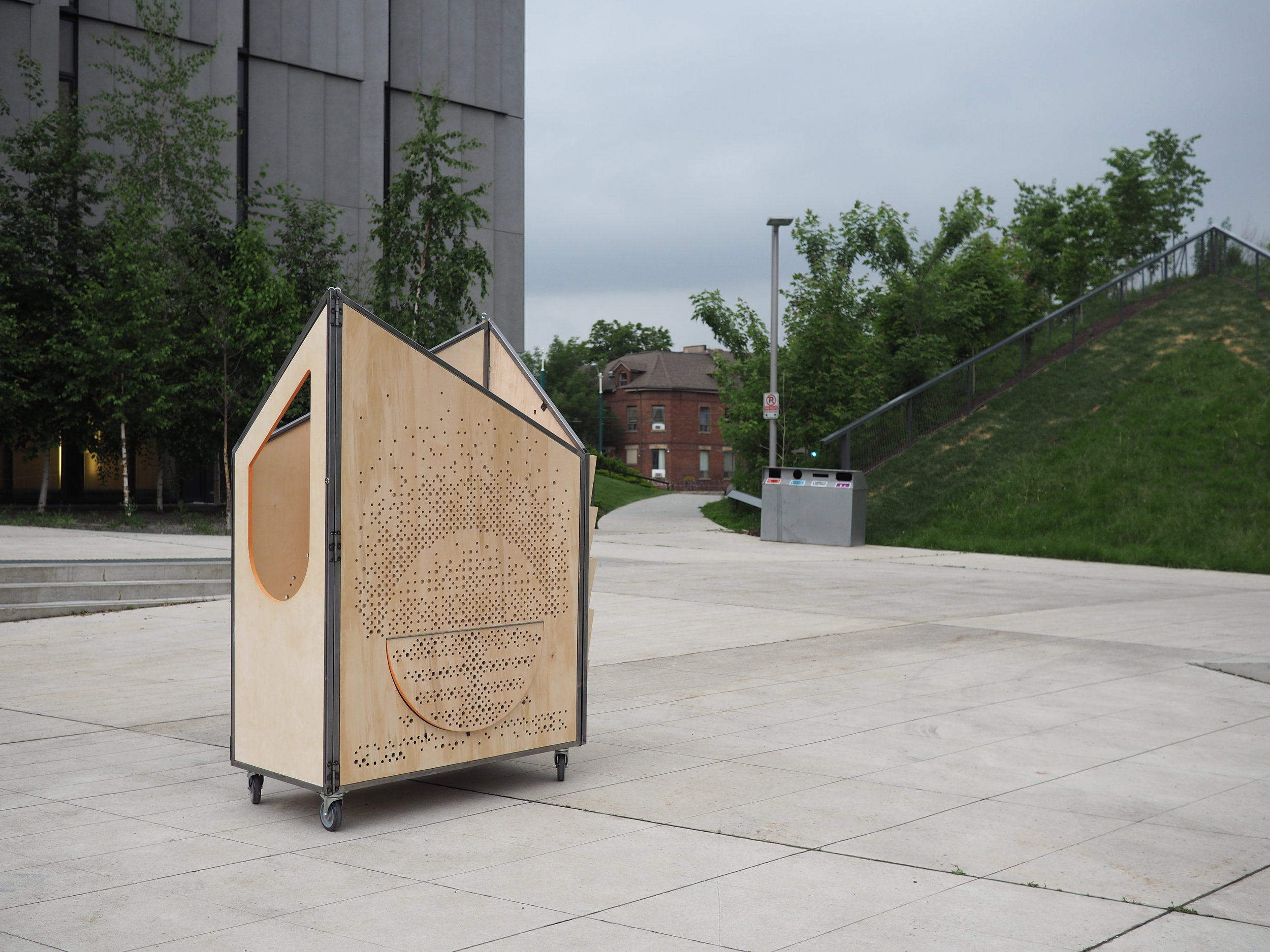23.07.19 - Summer design/build studio explores how architecture can help mobilize local communities
This summer, undergraduate students at the Daniels Faculty explored the role that architecture could play in fostering community outreach and engagement in Toronto’s Parkdale neighbourhood.
As part of a design/build studio (ARC399) led by Sessional Instructor Reza Nik, the students worked with members of the Parkdale Neighbourhood Land Trust (PNLT), to look at ways that engagement in social justice movements could be more spatially dynamic.
Over the course of two weeks, they designed and built a mobile structure that could be rolled out and set up in the public spaces people often pass through. The goal: to help local organizations, such as PNLT, spark discussion, participation, learning, and action in their own neighbourhood. Inspired in part by tourist information kiosks, The Mobilizer made its debut outside the Toronto Public Library’s Parkdale branch, July 4.
"In a city like Toronto, the general public often engages with social justice movements in the form of demonstrations, pickets, and, occasionally, targeted pamphleting campaigns — efforts that are typically limited in frequency and geographical scope, or are aesthetically unapproachable," says Nik. "As architects and designers, we could have a major part to play in addressing this problem. We are uniquely poised to design new spatial nodes that connect social movements with new and diverse elements of the public."
Led by Parkdale residents and community groups concerned about the gentrification that threatens the neighbourhood’s unique social, cultural, and economic diversity, PNLT formed to build a community land trust, which would allow it to acquire land. Once owned by the community, the purchased land could then be dedicated to affordable housing, social enterprises, non-profit organizations, urban agriculture, or open space. The organization bought its first piece of land in 2017. In 2019, it purchased an existing rooming house and will help ensure its units remain affordable for another 99 years.
Andrew Winchur, who currently chairs PNLT’s Communications Engagement Committee and manages the Parkdale Free School, joined Nik’s summer class as a guest instructor. He spoke to the students about the strengths and weaknesses of typical engagement tactics and the idea of using tourist kiosks as a framework for social movements. The students visited the Parkdale neighbourhood to meet with members of the community and learn more about PNLT.
The objective of the course was to develop a type of “pop-up architecture” that would “take up space” and facilitate a high level of social engagement. “The community wanted something that was mobile, so it could be set up anywhere, anytime, and something that provided a spectacle when pushing it down the sidewalk,” says Nik.
The resulting "Mobilizer" is flexible and easy to move, with fold out seating, a built-in chalkboard, shelves and slots for books and pamphlets, and a small battery-powered generator for microphones and laptops. The structure was designed to not only engage passersby, but also support pop up events and an outdoor classroom for the Parkdale Free School. A corkboard map of the neighbourhood provides wayfinding, and poles can be set up to support shading. The Mobilizer also includes six benches that can easily be assembled to seat 3 people each. The pattern of holes on one of the fold-out walls reflects the community’s solidarity flag.
In addition to providing students with the opportunity to turn their own drawings and concepts into a real physical piece of architecture, Nik hopes that the two-week intensive design/build studio will also inspire them to rethink their understanding of the role that architecture can play in social movements. “Lack of attention to the spaces of engagement creates an opportunity for architectural intervention,” says Winchur.
Visit PNLT’s website to learn more about the organization and how to get involved.


